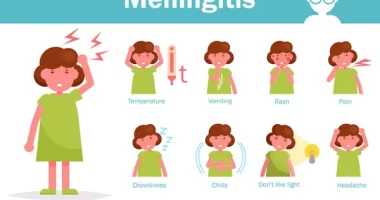Diabetes Warning Signs and When to Seek Help — According to the CDC, more than 37 million adults have diabetes, with one in every five having no idea. Diabetes, according to David G. Marrero, PhD, director of the University of Arizona Health Sciences Center for Border Health Disparities in Tucson, “may be the most serious public health crisis of our time.”
Diabetes-related issues killed more people in 2017 than breast cancer and AIDS combined. People don’t always recognize this because it’s often a non-visible disease that isn’t as traumatic as many cancers. Many people have diabetes for years and are in serious trouble by the time they become clinically symptomatic.”
Type 2 diabetes is by far the most common of the two types (type 1 and type 2). So, what happens when diabetes is not treated? “Diabetes is a condition that is expected to worsen over time.” “If type 2 diabetes is not treated, the high blood sugar levels can harm various cells and organs in the body,” says Vidya Aluri, MD.
Complications include kidney damage, often leading to dialysis, eye damage, which could result in blindness, or an increased risk for heart disease or stroke. Unfortunately, the effects of high blood sugars are not limited to this. There’s no cure for type 2 diabetes, but it can be controlled.
According to experts, here are five signs that you may have diabetes. If you notice any of these symptoms or have any concerns about your health, see a doctor as soon as possible to rule out any serious conditions.
1. Vision Issues

Diabetes can cause vision problems that worsen over time. According to ophthalmologist Yu-Guang He, MD, “as many as one in four working-age adults (those in their early 20s to early 60s) have Type 2 diabetes and are unaware of it.” “Imagine their surprise when they come to see me, an ophthalmologist, for blurred vision or eye floaters and we give them a referral to get checked for diabetes.”
Patients with Type 2 diabetes are at increased risk for diabetic eye disease, a group of diabetes-related eye conditions such as diabetic retinopathy and diabetic macular edema (DME). Approximately one third of my working-age patients have diabetic eye damage, and diabetic retinopathy is the leading cause of blindness in this age group. “In its early stages, this disease is called nonproliferative diabetic retinopathy,” says Russel Lazarus, B.Optom (Hons) M.Optom.
“During these early stages, the blood vessels in the retina which have been weakened by the high concentrations of sugar in the blood, begin to leak fluid into the retina. As fluid sits in the retina, it causes blurred vision and other visual distortions.
In its later stages, the disease is called proliferative diabetic retinopathy. During these stages, the retinal blood vessels begin to close and abnormal blood vessels are produced, threatening retinal detachment and vision loss.”
2. Increased Urination

Increased urination is a common symptom of diabetes, experts say. “Having diabetes means your body can no longer effectively balance your blood sugar levels on its own. Besides high blood sugar levels, diabetes can cause symptoms like frequent urination,” says Diana Gariglio-Clelland, RD.
“When your blood sugar is high, there is more glucose in your urine. High glucose in urine pulls water from the body, increasing the volume of urine output. This is part of your body’s way of getting rid of excess sugar when there isn’t enough insulin to do the job. The kidneys usually filter and reabsorb glucose in your urine.
With type 2 diabetes, the kidneys have to work harder than normal and can’t keep up with the high sugar levels, causing it to be excreted in the urine. When blood sugar levels are high and you’re urinating more, it causes dehydration. Dehydration stimulates thirst, causing you to drink more fluids.
Drinking more fluids can cause more urination on top of the already increased urination from diabetes. These two issues can cycle off each other in a continuous loop.” Not only does diabetes cause increased urination, but the urine may be sweet-smelling. “Normally, the amount of sugar leaving the body through the urine is not detectable,” says Matthew Goldman, MD.
“However, if someone’s blood sugar level is elevated enough, sugar begins to leave the bloodstream through the kidneys and enters the urine.”
3. Always Thirsty

Related to the increased urination, constant hunger and thirst could be a sign of type 2 diabetes. “No matter how much you drink, it feels like you’re still dehydrated. Your tissues (such as your muscles) are, in fact, dehydrated when there’s too much glucose (sugar) in your blood,” say Amy Hess-Fischl, MS, RD, LDN, BC-ADM, CDCES, and Lisa M. Leontis RN, ANP-C. “Your body pulls fluid from the tissues to try to dilute the blood and counteract the high glucose, so your tissues will be dehydrated and send the message that you need to drink more.”
This is also associated with increased urination. Even after you eat, you may still feel very hungry. That’s because your muscles aren’t getting the energy they need from the food; your body’s insulin resistance keeps glucose from entering the muscle and providing energy. Therefore, the muscles and other tissues send a ‘hunger’ message, trying to get more energy into the body.”
4. Fatigue

Fatigue is another common symptom of diabetes. “There’s no question that fluctuations in your blood sugar levels can cause fatigue,” states Diabetes Care Canada. “When your blood sugars are too high, for example, the blood can’t circulate as efficiently and your cells don’t get the oxygen and nutrients they need to function optimally.
High blood sugar can also cause inflammation. This in turn, releases cells called monocytes into the brain causing fatigue. Similarly, if your blood sugars are too low, your cells aren’t getting enough fuel to work well either, which affects your energy levels.” “When blood sugars are high the cells in your body are not able to access the sugars they need for energy and effectively are ‘starving’,” says endocrinologist Dr Sultan Linjawi, MBBS, BSc., MRCP(UK), FRACP. ”
This is either as a result of an insufficient supply of insulin from the pancreas or the body has become resistant to insulin as the levels have been high over some time and the insulin is no longer working effectively (insulin resistance). The irony is that even though the remedy for the fatigue is in the bloodstream (sugar for energy), the body cannot access it and makes you feel tired.
Often the symptoms of fatigue build up slowly so that you may not necessarily know just how badly you are affected until after treatment and sugar levels normalize once again.”
5. Excess Belly Fat

Being overweight, and having too much fat around the abdomen, is strongly linked to type 2 diabetes. “Although COVID-19 is a pandemic, overweight/obesity is becoming the most common chronic disease ‘pandemic’ in the world,” says Robert Eckel, professor of medicine emeritus at the University of Colorado School of Medicine Anschutz Medical Campus and immediate past president of the American Diabetes Association (ADA).
“Obesity is the most important predictor of new onset type 2 diabetes.” “Fat around the waist — an apple shape — is uniquely dangerous for developing diabetes and other chronic illnesses such as heart disease and kidney failure,” says Mercedes Carnethon, PhD, professor and vice chair of the Department of Preventive Medicine at the Northwestern University Feinberg School of Medicine.
“Fat in the waist region is described by scientists and doctors as being ‘metabolically active’ — meaning that central fat releases hormones and other biological substances that target and damage the organs and blood vessels that contribute to diabetes and other chronic illnesses.”
RELATED: 7 Surprising Side Effects of Eating White Rice









